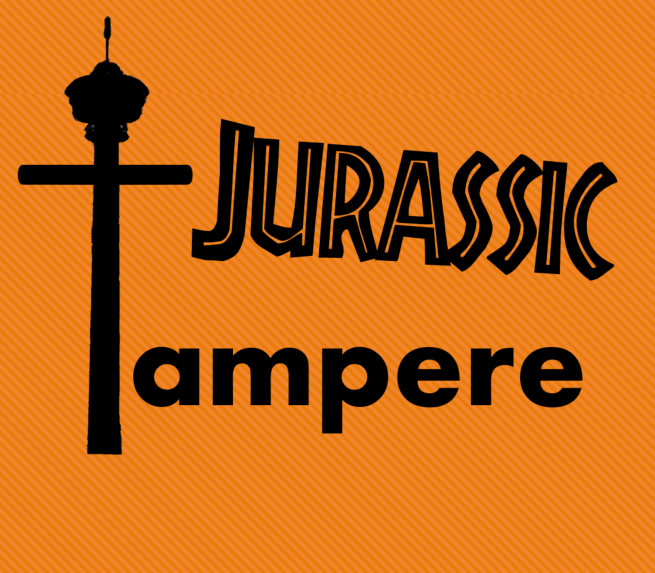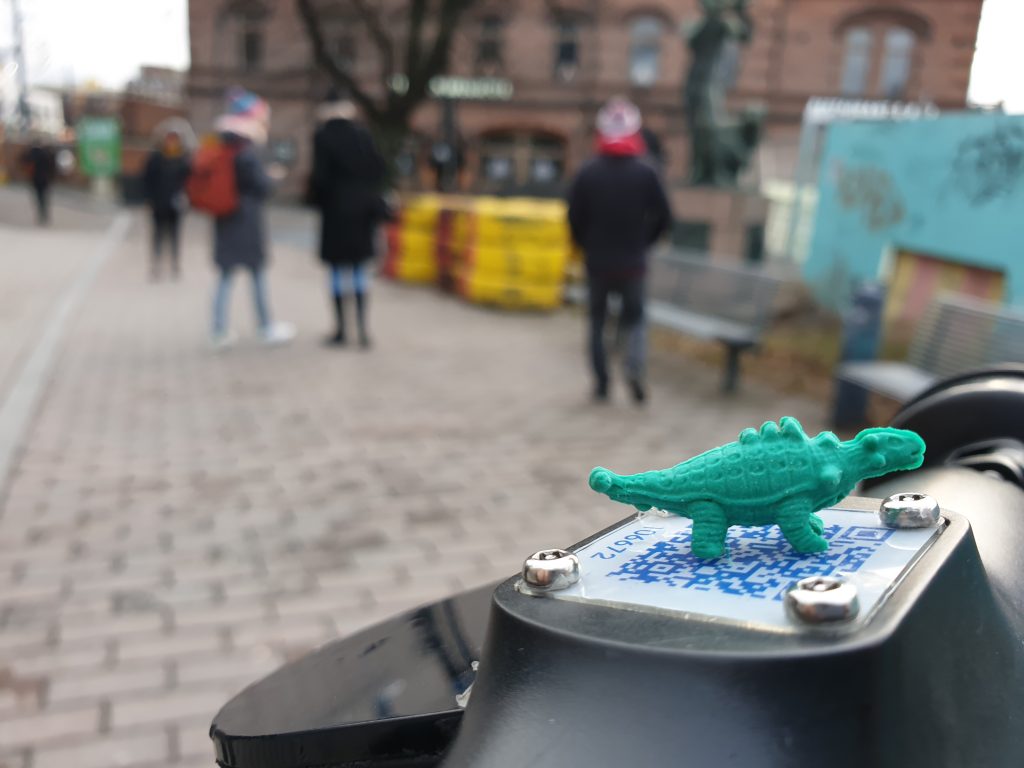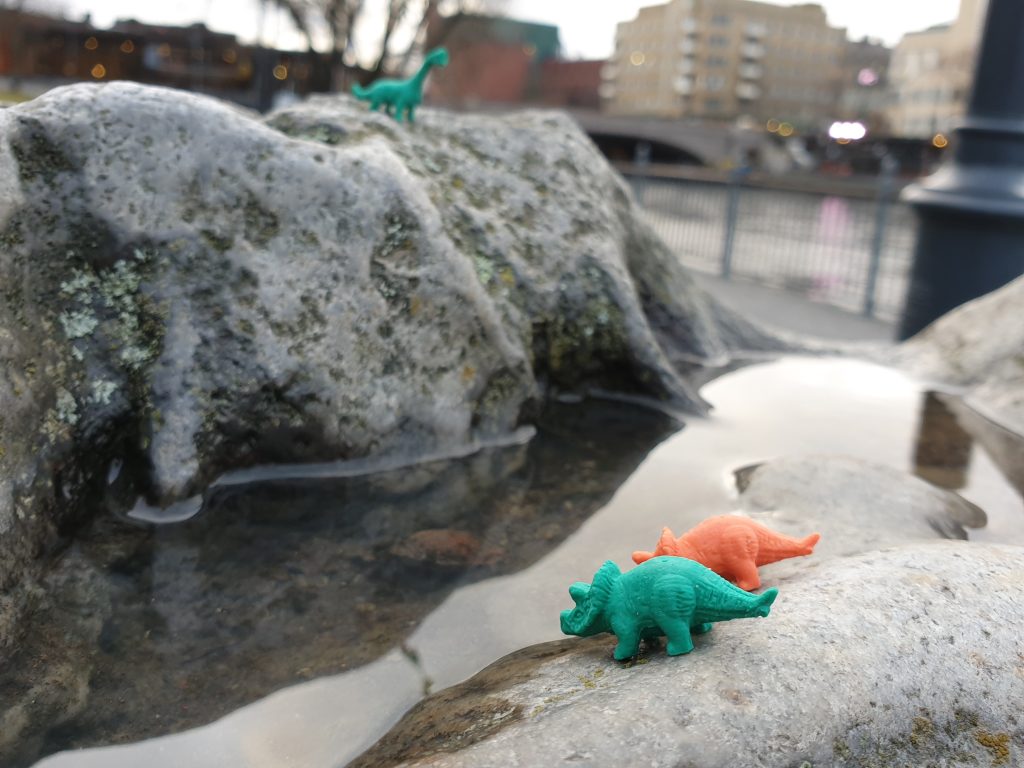
Jurassic Tampere
In December 2019 the peaceful city of Tampere, Finland, was invaded by hundreds of dinosaurs. Small, brightly coloured rubber toy dinosaurs, to be exact. This was part of Jurassic Tampere an urban toyification activity organised as part of the ReClaim project.
Why bringing toys in the public spaces? Cities have always been playgrounds. We play in the private spaces of homes and schools as well as in the streets, in parks and other public spaces. Today, however, actions of urban gamification are emerging as a possible antidote to the alienation of city environments caused by gentrification, to the anonymity brought by globalization and to the cold technocentrism of smart cities (Stevens 2017 & Nijholt 2019).
ReClaim is exploring different ways of using playfulness and games to promote city reappropriations – that is, different strategies of urban gamification. Jurassic Tampere is instrumental to this exploration. As there is currently is little to no work on the role that toys and objectual play can have in urban spaces, we have decided to investigate the potential strategies of urban toyification.
The term toyification, has only been defined recently (Thibault & Heljiakka 2019) and describes the idea of reinforcing an entity (an object, an interface, a human being…) with toyish elements so that it acquires a toyish appearance, form or function (Heljakka 2015). Urban toyification, then, is about using toys to modify the way its citizens perceive, interpret and interact with the public spaces.
In particular, Jurassic Tampere was based on the idea that positioning small toys in the city makes the whole environment look different: looking closely at them triggers a change of perspective in regard of scale. The objects and spaces around the little dinosaurs appear immense, a small patch of moss looks like a bush, a bolt becomes a stage, a puddle looks like a lake and so on and so forth. All the little toys scattered around the city, then, become occasions for entertainment and for wonder as well as invitations to look at the city, at its details and character.

During the activity, a group of nine participants from GG – the Eggkeepers – walked around the Tampere city centre for three hours, positioning in the public spaces 420 small rubber dinosaurs, taking pictures of the toys and observing the reactions of passers-by. Recording the reactions of the citizens would have raised ethical issues and confronting them directly could have been intimidating. The fact that most of the toys were collected by citizens by the next day, however, seems to suggest that the small dinosaurs were found and adopted rather quickly.
After the activity the Eggkeepers were asked to fill a short open survey. Its results suggest that the activity was quite successful: all respondents have mentioned that Jurassic Tampere effectively influenced their way of perceiving the city spaces: they started to notice minor details and gaps in the city, to observe people’s abandoned things, to pay attention to the colours of the city and to all the ongoing activities that are part of the urban diversity and dynamism. However, all respondents reported that the effects of Jurassic Tampere on their perception could not last more than a few weeks. Several participants also suggested that the activity could benefit from more structure, and maybe could be made part of a game or a flash mob. Many respondents felt the desire to connect in more direct ways with the people that collected the toys.
Jurassic Tampere, then, is an encouraging experiment and more activities of urban toyification – and more dinosaurs – will soon find their place in Tampere streets.

Acknowledgements:
This project has received funding from the European Union’s Horizon 2020 research and innovation programme under the Marie Sklodowska-Curie grant agreement No 793835.
References:
Stevens, Q (2007) The ludic city: exploring the potential of public spaces. Routledge.
Nijholt, A (2019) Making Cities More Playable. Springer.
Thibault, M, and K Heljakka (2019) “Toyification: a conceptual statement” in G. Brougère & M. Allen, proceeding of 8th ITRA.
Heljakka, K (2015): Toys as Tools for Skill-building and Creativity in Adult Life, Seminar.net. International Journal of Media, Technology and Lifelong Learning (11)2, pp. 134-148.




Sorry, the comment form is closed at this time.